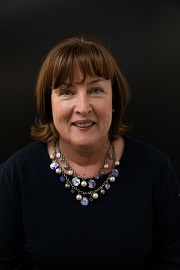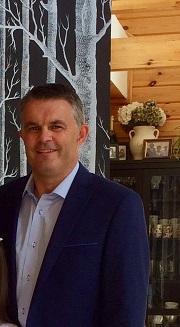As our population ages there is a corresponding increase in the prevalence of chronic diseases, which are major causes of morbidity and mortality.
In 2020, it was estimated that 1.3 million people in Ireland were living with one of the major chronic diseases – cardio-vascular disease, chronic obstructive pulmonary disease (COPD), asthma, or diabetes – and this figure is predicted to increase by around 40% over the next decade.
According to the Government of Ireland National Risk Assessment 2019, chronic disease accounts for 40% of hospital admissions and 75% of hospital bed days, as well as leading to additional demand for residential care places.
And this meant that the approach to monitoring and treating this significant cohort of patients needed to change.
The role of technology
Even before COVID-19 hit there was an increasing acceptance that technology could play a key role in transforming services in the future.
But the pandemic helped accelerate that change.
“When COVID-19 hit and the world came to a standstill, healthcare services struggled to cope,” explains Suzanne Denieffe (pictured below left), head of the School of Humanities at the Waterford Institute of Technology.
I think because when I knew my oxygen levels were good, it gave me more confidence to go about my day and do more activities
“We were told to restrict face-to-face contact with patients and all these people with chronic diseases saw visits by healthcare professionals end and they were left isolated.
“For years we had known that technology could help, but Ireland had not yet embraced it.

“With COVID, suddenly there was an impetus and a requirement to see what technology could do to support these patients.”
And, so, the opportunity arose to undertake a telehealth pilot trial, overseen by Denieffe and her team and involving a multi-agency stakeholder group including Age Friendly Ireland, the Integrated Care Programme in the HSE, Wexford General Hospital, and Wexford County Council’s Age Friendly Programme.
The trial was underpinned by Tunstall Healthcare technology and its Emergency Response team.
The pilot project set out to provide a 12-week telehealth intervention to 50 patients with a chronic illness, most of whom were older people not adept at using technology.
Enabling self management
Tunstall’s ‘myMobile’ patient app and ‘triageManager’ solutions were provided to patients and clinicians for the duration of the trial.
The ‘myMobile’ app enables self management and monitoring of patient health.
It collects data from monitoring devices on vital signals such as pulse, oxygen levels, and blood pressure, as well as patient-reported symptoms, and provides a range of benefits including automatically-updated readings via Bluetooth-connected devices and the ability for manual entry of readings, automated alerts, and activity reminders.
The ‘triageManager’ clinical management software platform enables clinical and service teams to monitor patients remotely, providing a number of different outputs, including automated prioritisation tools and summary reports.Early dialogue with stakeholders and the multi-disciplinary, multi-agency approach meant we could put the project into operation and make changes, rather than just starting a study and letting it fall down
Together, these devices helped patients to self manage their condition and enabled clinicians, restricted from face-to-face contact, to monitor patients and prioritise their time more effectively.
Ensuring clinical buy-in

Denieffe said: “To be asked to be involved with this pilot was really brilliant.
“The older age group were particularly affected by COVID. Many lived alone and were not used to accessing and using technology. For this group it was a great opportunity to support them in learning about their illness, help them to manage it, and give them reassurance.”
From the beginning of the pilot, the project team worked closely with clinicians to ensure they were used to the technology and could see the benefits it would bring in terms of reducing workload and improving patient self management.
James Doyle (pictured right), managing director of Tunstall Emergency Response, explains: “Training of clinicians was a challenge at the offset as we were still restricted from face-to-face contact.
“We spent a lot of time working with them to overcome their concerns and we pre-programmed the devices and left them with the clinicians so they could become familiar with them.”
This engagement was crucial to early buy-in and extended to patients, who were visited in their homes and taken through the system.
A telephone helpline provided further support and information.
A multi-agency approach
Denieffe said: “Early dialogue with stakeholders and the multi-disciplinary, multi-agency approach meant we could put the project into operation and make changes, rather than just starting a study and letting it fall down.
“The equipment provided had a really-clear and simple interface and there was great support if there was a problem.
“Had we just handed it over without this support patients may just have left it there for the 12 weeks.
“But we found that the older people really appreciated the reassurance it gave them.
We dedicated time and resource early on to make sure clinicians were comfortable that the aim was to make their working life easier if we could
“It’s not a long-term monitoring solution; the intention is to use it to help patients manage their illness. But, after the 12 weeks, patients had learned a lot of things and had really embraced the technology.
“They reported that they learned to trust themselves and could monitor any deterioration. They knew their boundaries and some patients said that, based on their readings, they would go for longer walks or do activities they might not otherwise have done.
“In fact, some patients asked for the technology to do even more.
“We kept it quite basic as we didn’t want to overburden them, but in the next phase of the pilot we will add more functionality.”
A powerful enabler
Doyle added: “From my personal litmus test of success and failure, when we went to collect the equipment the number of people who wanted to retain it was huge.
“It was a very-powerful enabler of self management. They had all embraced it and it had given them a new lease of life.
“One man with COPD became a champion of the service and took measures to try and improve on the readings each day.”
And clinicians have also embraced the approach.
Doyle said: “Clinical engagement from the offset was critical to the success of the pilot.
“We dedicated time and resource early on to make sure clinicians were comfortable that the aim was to make their working life easier if we could.
The health service in Ireland does not want to let go of this, so the ambition is to support patients in five counties in the South East by taking the service into integrated care hubs
“Ultimately, they did not want extra workload and they wanted to be provided with just the information they needed to see so they did not have to focus on every single one of the 50 participants, but on those who most needed their attention.
“We invested so much time and effort into training them and some early adopters got it straight away while others were more closed-minded.
“Without engagement with patients and clinicians, we would not have had the success we did.”

The elderly patients embraced the use of technology, with many wanting to keep it after the 12-week trial period. Images, Tunstall Healthcare
High levels of engagement
Denieffe adds: “Buy-in of clinicians for phase two will be vital.
“In preparation for the next phase we held a number of workshops and this was key because then they could see the value of it.”
Findings from the pilot show patients were highly engaged with the project, with 98% of readings recorded. There were also low levels of attrition, partly due to the support provided by Tunstall with any queries they had, and reminders to take readings.
One participant commented that “It’s nice to know you are being monitored, which gives you more confidence.”
Another added that it gave them confidence in their illness management, telling researchers: “I think because when I knew my oxygen levels were good, it gave me more confidence to go about my day and do more activities.”
And a third participant found their use of the health service improved.
“I think the change for users is that you can get a check from home without having to constantly go back and forth to the hospital,” they said.
The long-term impact
With the initial pilot complete, the team is now working on a second phase which will cover five counties and around 250 participants.
This will provide more in depth information on the impact of the intervention on the use of health services and patient deterioration.
Telehealth is the future of healthcare as it offers services that can be designed around the patient, providing support in the community and helping to keep people out of hospital
Denieffe said: “The pilot was conducted during COVID so when health services reduced in-person clinics and patients were isolating, thus reducing exposure to infections, we were not able to demonstrate a cost saving. However, international research does suggest a big saving in clinical time, which is key.
“Patients also benefit as they do not have to travel or take time off work, and utilisation of acute services can be reduced.
“However, we will be looking to provide more evidence of this in the second phase of the trial.
“The health service in Ireland does not want to let go of this, so the ambition is to support patients in five counties in the South East by taking the service into integrated care hubs.”
The second phase will also recruit more clinicians, with a number of workshops planned.
In conclusion, Doyle said: “Telehealth is the future of healthcare as it offers services that can be designed around the patient, providing support in the community and helping to keep people out of hospital.
“The HSE in Ireland is committed to digital transformation and driving service improvement using technology.
“And, at Tunstall, we were delighted to be involved in the telehealth pilot.
“It is absolutely achievable that more people can live independently for longer at home and feel empowered to self manage and stay well.”




